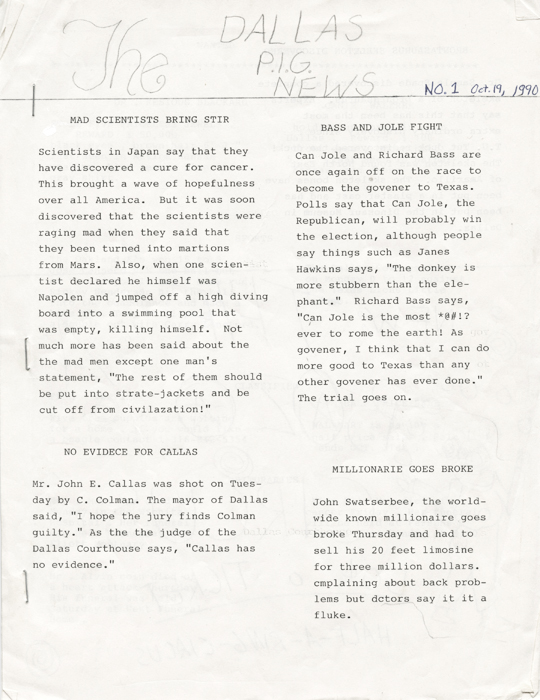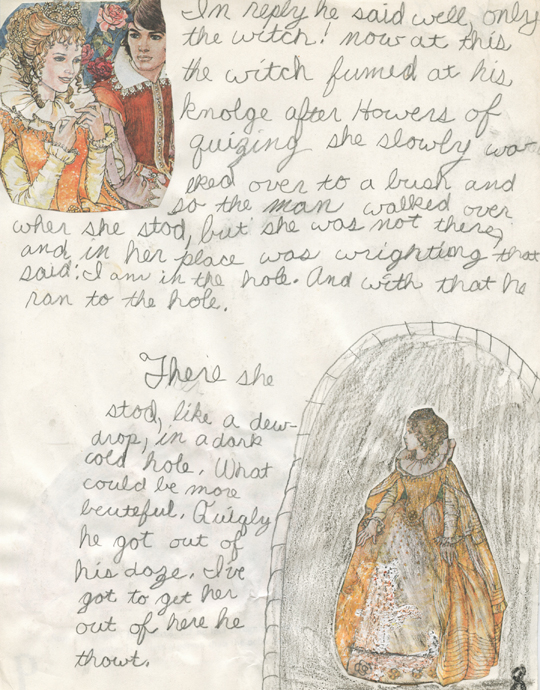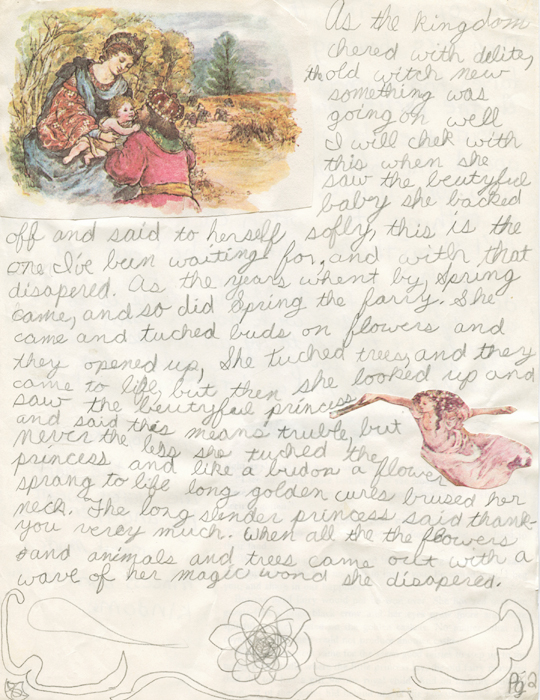Photographer Ethan Rafal explores our topic Monument in Shock and Awe, a part journal/part photo essay multimedia work about homeland decay.
Read MoreTransgender Dysphoria Blues
Musician and writer Corey Claxton Blaustein is our newest Off Paper regular contributor. He originally hails from Los Angeles, and has lived in Seattle for the past six years. Here, he considers our current topic, "Transformation."
Read MorePrivacy, “Facts,” and the Blurry Lines between Fiction and Nonfiction: Gina Frangello interviews Pam Houston
In anticipation of their upcoming TPR event, Author Gina Frangello interviews Professor and Author Pam Houston about privacy, genre, and facts vs. truth.
Read MoreWho Was Your First Hero, Jonathan Miles?
My first hero, if we’re sticking to chronology, was probably Ozzie Newsome, the NFL Hall of Fame tight end for the Cleveland Browns in the late-’70s/’80s. A few years ago one of my sisters dug out a copy of a letter I wrote to him, seeking advice on how to deal with schoolyard bullies. A more pertinent early hero, however, was the science-fiction author Isaac Asimov, whose books -- my God, he must’ve written hundreds -– I devoured as a child. I wrote to Asimov, too, this time seeking advice on how a kid might grow up to be a writer. Asimov, unlike Ozzie Newsome, wrote me back, and his terrifically simple counsel -– to read as much as possible, and to practice writing as much as possible -– still stands as the best and most concise advice on writing I’ve ever heard. Read, write, repeat. Everything else is just details.
Jonathan Miles‘s latest book, WANT NOT came out from Houghton Mifflin Harcourt in November 2013. “Well, I loved this book,” raved Dave Eggers in the New York Times Book Review, “Jonathan Miles can write, and here he’s written a wonderful book, and there’s no one I would not urge to read it.” Jonny’s first novel, DEAR AMERICAN AIRLINES, was named a New York Times Notable Book and a Best Book of the Year by the Los Angeles Times and the Wall Street Journal. A former columnist for the New York Times, he serves as a contributing editor to magazines as diverse as Field & Stream and Details. A former longtime resident of Oxford, Mississippi, he currently lives with his family in rural New Jersey. Jonathan is reading from his newest book, Want Not, At University Books on MONDAY NOVEMBER 18 at 7:00PM. More info can be found here
The story of what happened to me when I died: I Was Amelia Earhart, by Jane Mendelsohn
I love playing book roulette. There’s something incredibly satisfying about walking into a library or bookstore and picking a new book entirely at random. Most of the time, I’m fairly disappointed by the quality of whatever I end up reading, but I’m on a hot streak right now.
Read MoreWho Was Your First Hero, Sharon Arnold?
My first hero is totally a fictional character. I didn’t have a lot of good role models (who does?) so it’s probably not very surprising. I was born right in the middle of the 1970s, the same year the Runaways were born, and the year Lynda Carter first donned the strapless red, blue, and gold bootyshort costume that is iconically Wonder Woman. I will never forget her.
It’s ridiculous to watch it now. It’s super campy and the plot line is – I don’t even know what it is. She gets the bad guy and looks great doing it. But Lynda Carter is still the sexiest thing I’ve ever seen on television and her disco glam version of Wonder Woman will always be first in my heart. When I was four, I was inseparable from the bracers and crown that I would make out of paper and I would wear everywhere until they fell apart. When they did, I made more. My grandmother (who raised me) would help me carefully wrap the poster board in foil so it would be “metal” and I’d color it with a yellow marker to make it gold. If my grandmother insisted upon the removal of said adornment because of something as mundane as a bath, I’d yell indignantly. Greek goddesses don’t need to remove their armament to bathe – they’re just magically amazing and nice-smelling. They probably don’t even need baths. How silly to even suggest it.
Later, in 2nd grade at a school carnival, I was over the moon about a cardboard Wonder Woman at the photo booth. As I stepped up the ladder to put my head over her body the photographer exclaimed, “You look just like her!!” and I thought I would die. The resulting photo does not make any effort to hide the biggest, shit-eating grin I think I’ve ever worn.
As I grew up and got into comics, my love for her became deeper. It isn’t just that she’s drop-dead gorgeous, tall, athletic, independent, super strong, and invincible. It’s that she’s complex. Descended from Amazons and Greek mythology, she is expected to endure a world that is not yet ready for her. If she removes her bracers, she will be unfathomably powerful but she will also lose her mind. Once, she gave up her powers to stay here. She got them back. She’s smart as hell, using her wit and wisdom to solve problems, not using her beauty. She’s been through multiverses and spans a myriad of alternate Earths. She’s in love with Hades. She is presumed to love Superman. She is a warrior, but she is a woman.
The love affair blooms because she, like most Greek heroes, is who we aspire to be. The truth is that Wonder Woman is the ultimate human. She is not infallible. She’s emotionally layered. She has to make tough choices and they may not always be the right ones – there are consequences. We can do it all, but there is always a price. You can’t have everything. We can imagine ourselves in her place, doing the same thing, facing the same choices. It’s a fantasy – of course we could never be her. But, because she is human, we see ourselves in her, and we dream that some part of her exists in us, too.
Sharon is a Seattle-based artist, curator, and writer. She studied at Pratt Institute in New York and graduated Magna Cum Laude from Cornish College of the Arts, focusing on sculpture, art history, and philosophy. She is Founder of Bridge Productions/LxWxH and writes for her art blog Dimensions Variable and Art Nerd Seattle.
Some notes about the images: The Bather by William Bouguereau 1879 Photoshopped by FlashDaz for an online contest– I included it because it’s my favorite adaptation of Wonder Woman and it merges my art life with my superhero life; Wonder Woman’s New 52 costume. Panel from Justice League Vol. 2 #3 (Nov. 2011). Art by Jim Lee and Scott Williams; Wonder Woman in battle armor: 2003 DC Comics Wonder Woman: The Ultimate Guide to the Amazon Princess. –SA
What’s the First Thing You Ever Made, Mary Sharratt?
The first things I made were pictures. I drew obsessively on every scrap of scratch paper. Coloring books were boring—I wanted to make pictures from my imagination, illustrating all my yearnings and dreams. Living in suburbia with no pets, I sketched countless horses with their manes flying. I also drew people—not people I knew, but exotic characters from other places and times. The houses I drew did not in the least resemble the one I lived in. Instead I sketched castles and gothic mansions. When I grew older and learned perspective, I drew the landscapes that these horses, people, and houses belonged to, with roads that vanished off into the distance where mountains rose darkly on the horizon. What lay beyond those mountains?
Alas my artistic skills could not keep pace with my imagination. So I stopped drawing and started writing stories. Words were the wings that could let the images inside my head fly free and finally find their home.
Mary Sharratt is a writer based in Lancashire, England. Her latest book, Illuminations: A Novel of Hildegard von Bingen is published by Houghton Mifflin Harcourt. Visit her website: www.marysharratt.com.
What’s the First Thing You Ever Made, Amanda Manitach?
The first thing I remember making dates back to age four. My parents bought me a full size waterbed at that age. They built a wooden frame for it and I climbed inside and made pencil drawings of funny, flower-faced people all over the plywood, underneath where the mattress went. So every time I moved the mattress I’d encounter this bizarro city of people with petals instead of hair and ears.
I always made a lot of publications as a kid—hand-drawn science magazines or mock newspapers pounded out, stream of consciousness style, on one of those newfangled Brother AX-28 typewriters.
I have no idea when I wrote the fairy tale. The syntax is frighteningly similar to how I write today (although, thankfully, I’ve learned to spell a little better),
Finally, I was a nerd and a country girl and wanted very badly to be a naturalist when I grew up, running around with a butterfly net, collecting specimens from tide pools. In hindsight, I think this is a strictly bourgeois, Victorian occupation. I kept illustrated journals of all my fantastically exciting experiments, as all good Victorian schoolmarms do!
Amanda Manitach (www.amandamanitach.com) is a writer and artist based in Seattle, WA. It’s probably pretty obvious that she was homeschooled.














